Abstract
OBJECTIVE: To determine public attitudes toward the use and possible limitations of assisted reproductive technology (ART). DESIGN: Mail survey based on telephone numbers selected at random by computer. SETTING: Edmonton. PARTICIPANTS: A total of 602 Edmonton residents aged 16 years or more (57% of eligible subjects) reached by telephone agreed to participate. Completed questionnaires were received from 455 subjects (76%). MAIN OUTCOME MEASURES: Attitudes toward egg donation, sperm donation, selective fetal reduction, embryo freezing and experimentation, and surrogacy, as determined through responses to five cases. Comments and demographic data were also solicited. MAIN RESULTS: Overall, 66% and 63% respectively of the respondents would donate an egg or sperm to a sibling; the corresponding rates for donation to a stranger were 41% and 44%. Selective fetal reduction was supported by 47% of the respondents, although only 24% would support fetal reduction to eliminate fetuses of an undesired sex. Most (64%) thought that live embryo freezing should be permitted by law. A total of 74% agreed with surrogacy if done for medical reasons, but 85% opposed its use for reasons of convenience. Overall, 72% of the respondents thought that ART should be regulated. A total of 58% felt that physicians should be primarily responsible for determining the allowable limits of this technology, and 38% felt that the public should be primarily responsible. Only 21% agreed with public funding of ART. Religious affiliation strongly influenced attitudes toward ART. CONCLUSIONS: Public support for ART varies depending on the circumstances of its use. Education is needed to make the general community aware of the various aspects of ART. The results of this survey should help physicians and governing bodies make informed decisions about the future directions of ART in Canada.
Full text
PDF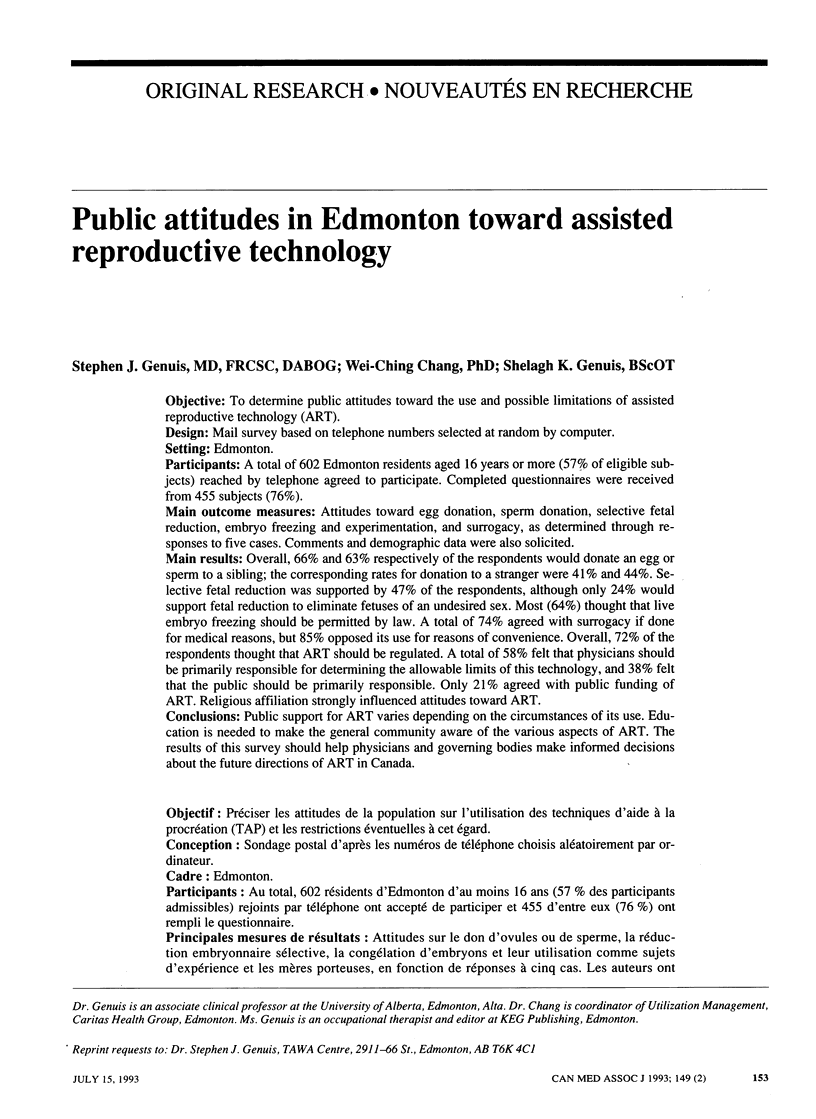
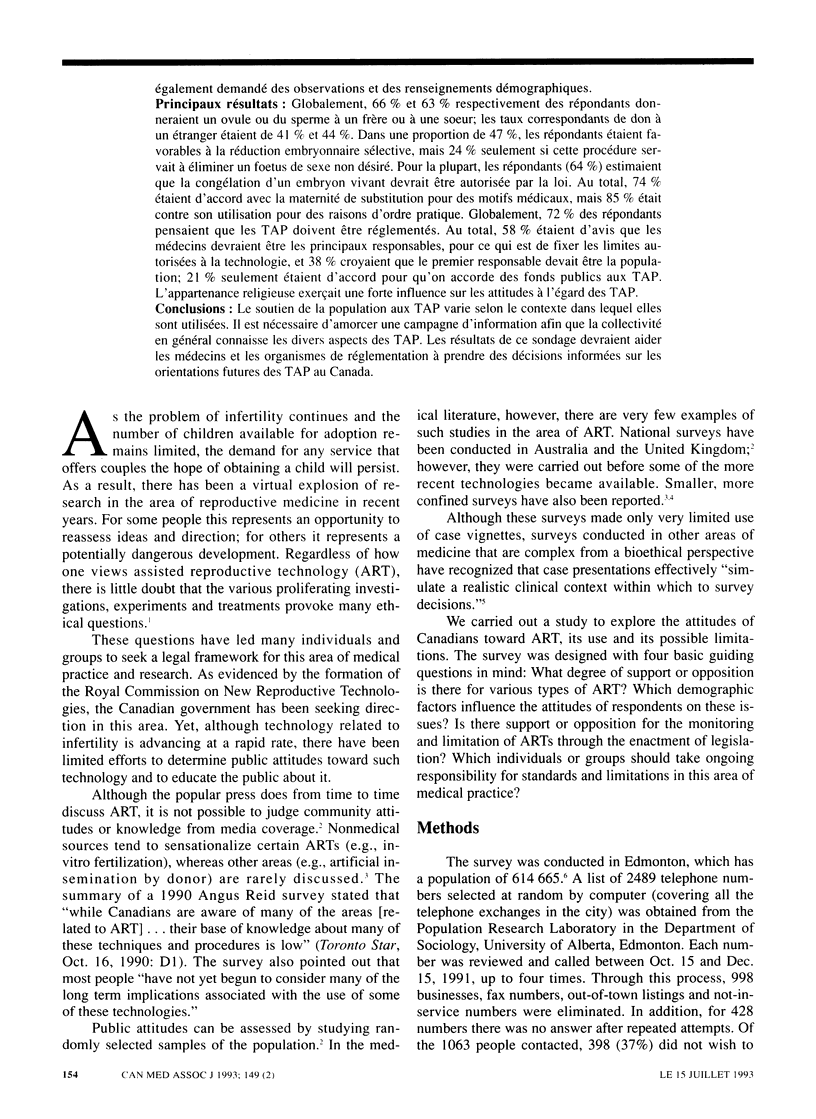
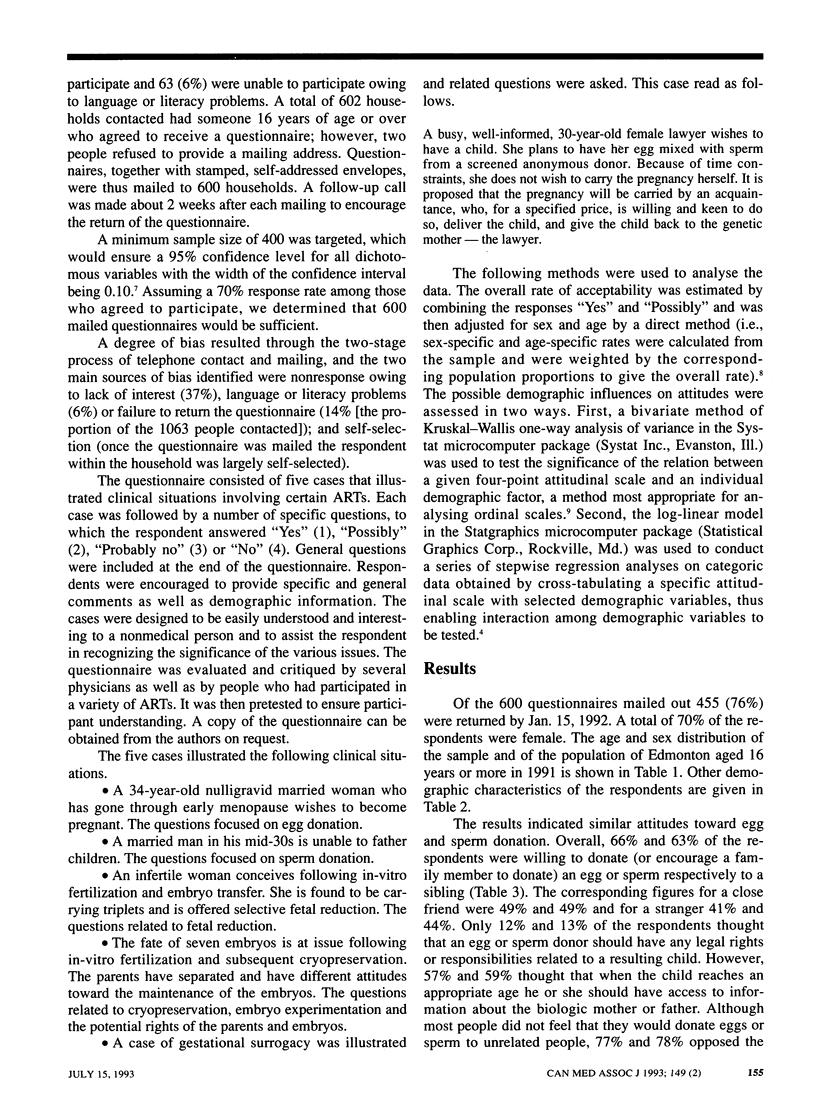
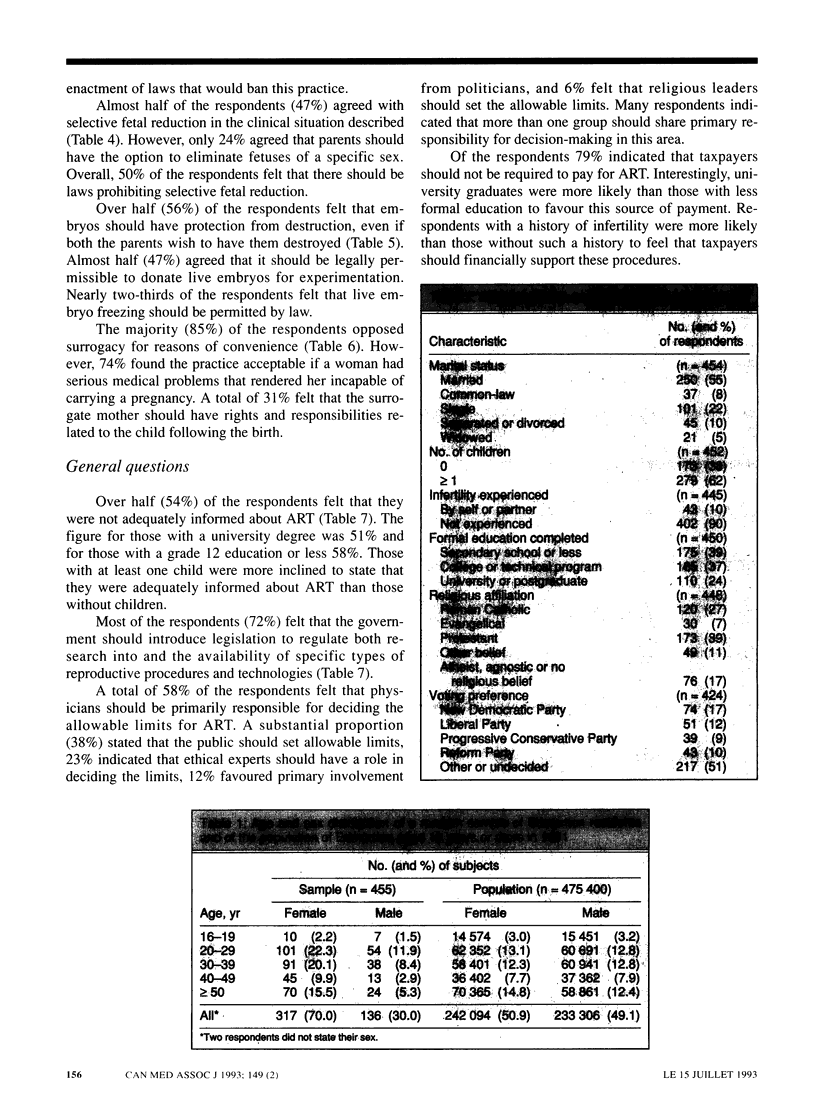
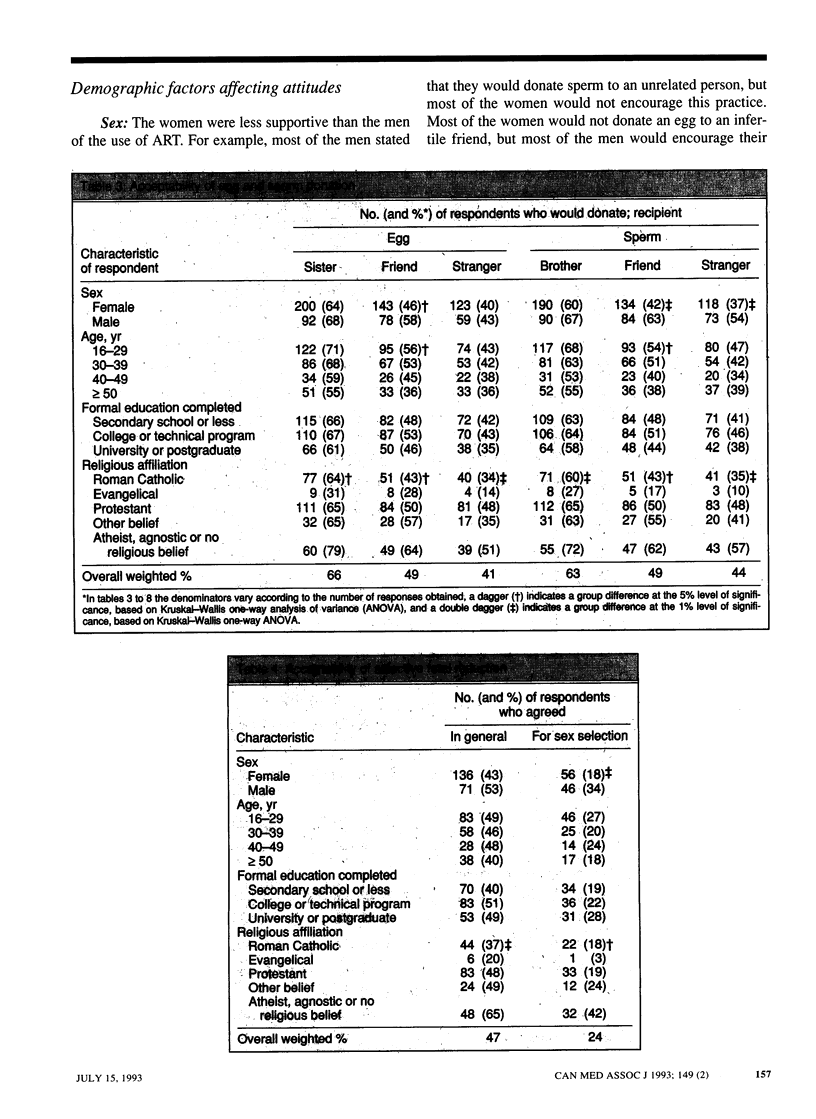

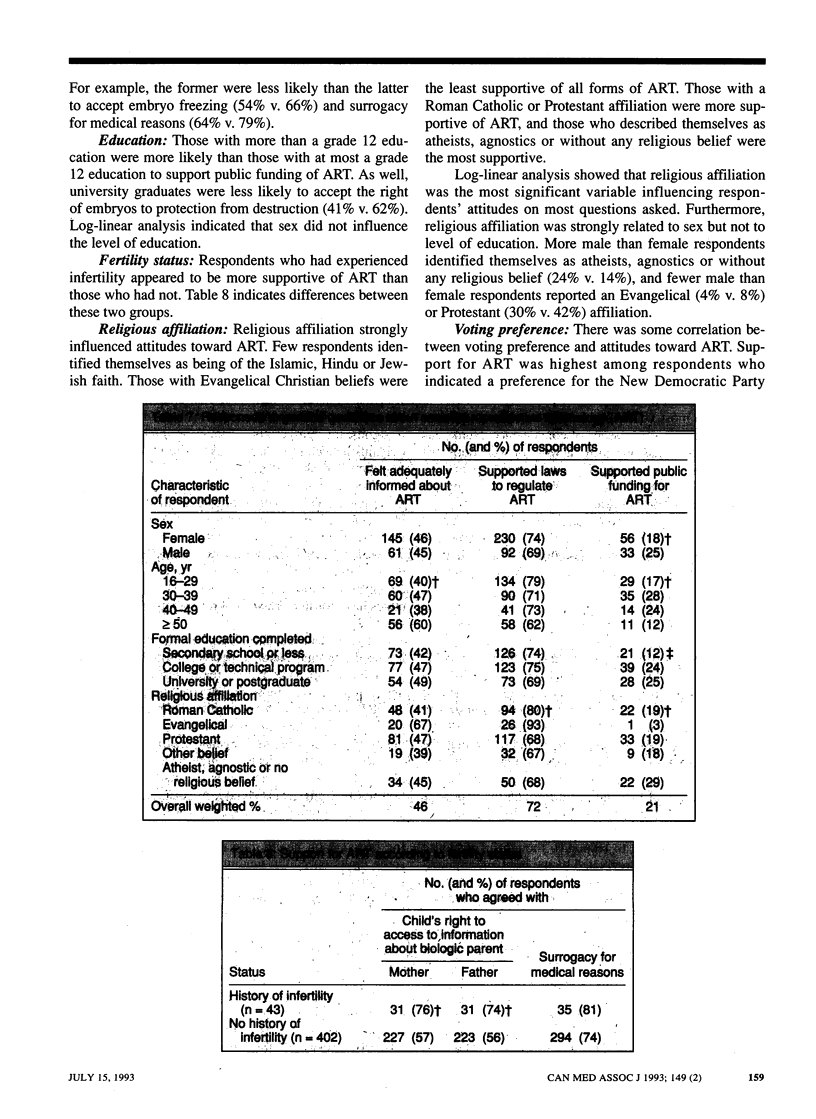
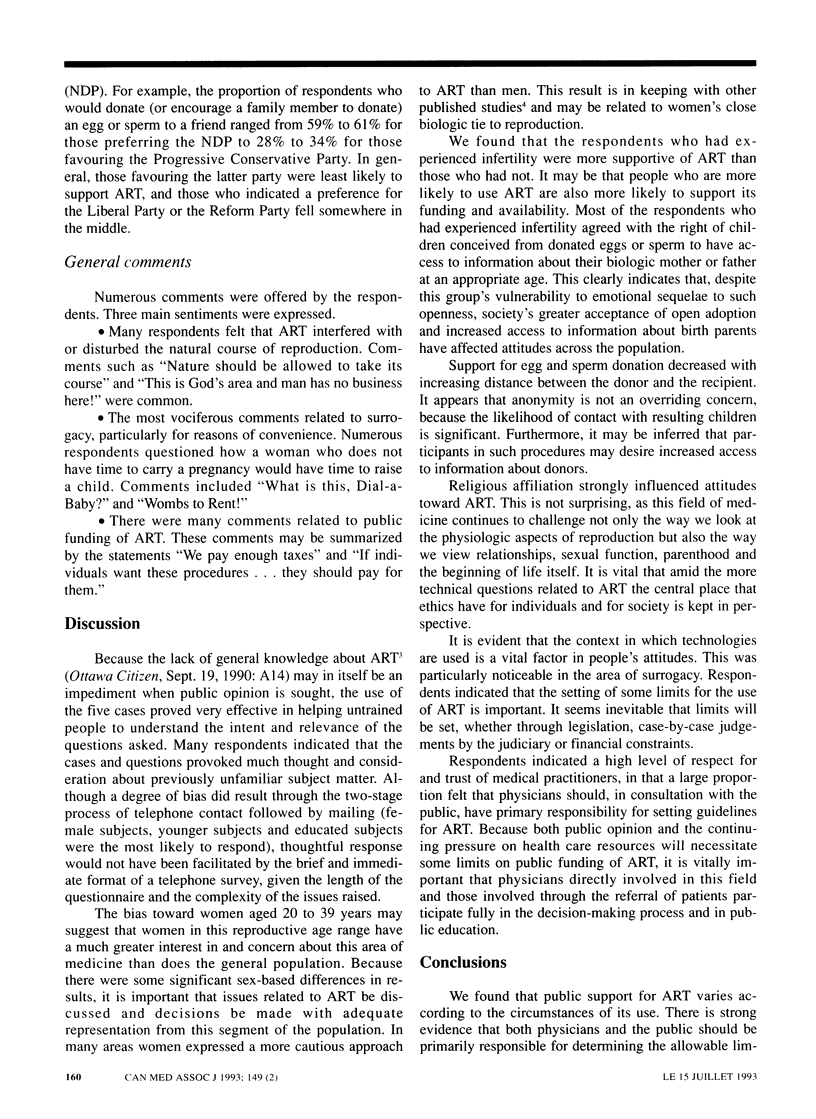
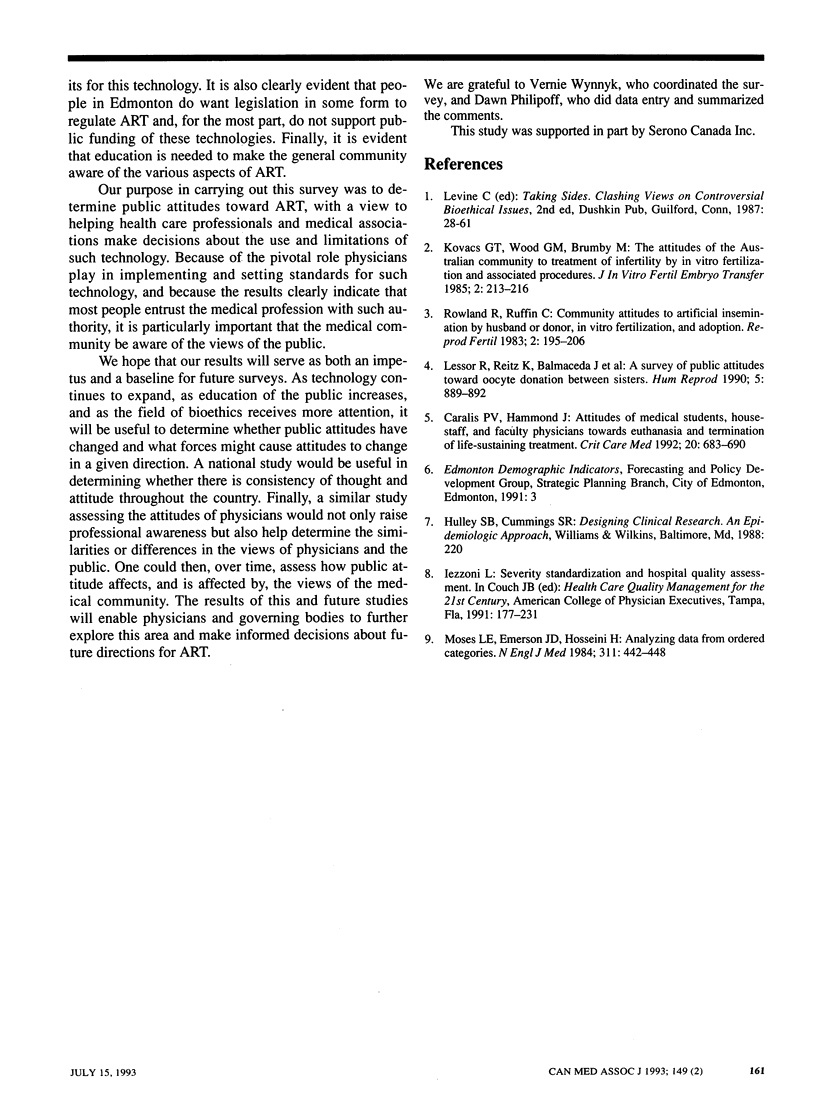
Selected References
These references are in PubMed. This may not be the complete list of references from this article.
- Caralis P. V., Hammond J. S. Attitudes of medical students, housestaff, and faculty physicians toward euthanasia and termination of life-sustaining treatment. Crit Care Med. 1992 May;20(5):683–690. doi: 10.1097/00003246-199205000-00023. [DOI] [PubMed] [Google Scholar]
- Kovacs G. T., Wood C., Morgan G., Brumby M. The attitudes of the Australian community to treatment of infertility by in vitro fertilization and associated procedures. J In Vitro Fert Embryo Transf. 1985 Dec;2(4):213–216. doi: 10.1007/BF01201799. [DOI] [PubMed] [Google Scholar]
- Lessor R., Reitz K., Balmaceda J., Asch R. A survey of public attitudes toward oocyte donation between sisters. Hum Reprod. 1990 Oct;5(7):889–892. doi: 10.1093/oxfordjournals.humrep.a137205. [DOI] [PubMed] [Google Scholar]
- Moses L. E., Emerson J. D., Hosseini H. Analyzing data from ordered categories. N Engl J Med. 1984 Aug 16;311(7):442–448. doi: 10.1056/NEJM198408163110705. [DOI] [PubMed] [Google Scholar]
- Rowland R., Ruffin C. Community attitudes to artificial insemination by husband or donor, in vitro fertilization, and adoption. Clin Reprod Fertil. 1983 Sep;2(3):195–206. [PubMed] [Google Scholar]


